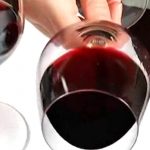From the shelves in the stores, visual messages send us colourful and elegant labels, and only later, when we approach them about ten centimetres from our nose, do they inform us about the wine we buy. Price is also a filter for our taste, but not a guarantee of what we want to taste. However, the contents of the bottle can also surprise us unpleasantly and be different from the gallantry and freshness of the wine label. So trust your own palate to get a credible wine trial that suits your mood and taste.
However, this is not an easy task. Wine requires readiness to open your senses and make a tasting experiment, in order to find what gives you pleasure. Wine-tasting does not mean drinking too much, but trying. It is a sensitive impression of everything that nature offers you from wine. You don’t have to be a professional taster or sommelier to be able to get this experience to the fullest. It is enough to be a wine lover and to be eager to have fun to make a small personal tasting at every social meeting with a glass of wine. Follow some of the following rules for your enjoyment and fun.
1. Choose the right wine glasses from clear glass. Preferably with a stem, so as not to hold the glass directly with your hand. Examples of vulgarization of wine drinking patterns include drinking a six-year-old Merlot in a beer glass, or using a juice glass to make a Chardonnay spritzer.
2. Before wine-tasting, do not drink strong alcohol, do not smoke a lot of cigarettes or brush your teeth immediately before with an intense toothpaste. In those who have done that before wine-testing, the receptors on the tongue and palate have become less receptive to stimuli. If you have already done that, take a piece of plain bread and a few sips of water to neutralize the taste in your mouth.
3. The first impression of the wine is visual. Raise the glass to eye height and watch the colour and clarity of the wine. That is why transparent glasses are used for wine-tasting. White wines should have shades from green-yellow, straw-like to the colour of old gold. As they age, they darken and take on a honey hue. Red wines can have the colour of red brick, rose up to deep purple colours of rotten cherry. As they age, they get a yellow, then an orange ring, and finish by getting a brown glow.
4. The second impression depends on several factors. Feel the initial aromas in the wine. Then gently swing the glass with fine spiral movements of the palm, without pouring the wine from it. Thus, the wine will receive oxygen and release the aromas. Watch the wine pour over the walls of the glass. Bold and wine containing higher percent of alcohol leave thicker traces on the glass itself.
5. Smell the wine a second time. Position your nose over the glass. Exhale the air from the lungs, then slowly inhale through the nose filling the lungs. You will feel the scents one by one. Quality wines have complex scents, but these properties of wine will be recognized by your brain as already familiar fruit scents. White wines have aromas of melon, pineapple, banana, pear, peach, and red wines of plum, blueberry, blackberry, cherry. If wine is stored in a wooden oak barrel, you will feel the scent of vanilla, cinnamon or cedar. And if the barrel is new, you will feel the smell of smoke among others.
6. Swallow the wine slowly and feel it pouring down your oesophagus. At first you will experience a feeling of warmth, and a taste of toasted bread, earth or acacia flower. This is where the structure and boldness of the wine body comes into play. The longer the finish, the more bold the wine. Body is an expression of the ability of wine to meet a high degree of sensitivity of the receptors in the mouth. The impression of balance and harmony of all the wine components is also present.
In practice, your memory will keep the reminiscence of the wine that suits you best and you like, which will not make you consumed, but will relax you and awaken a fine feeling of pleasure. Drink whatever wine you like, but in moderation, because it is intended only for you and your mood.
7. Take a sip of wine, but do not swallow it. Just spin it in the front part of your mouth over your tongue and palate. Different parts of the tongue are sensitive to different tastes. Most people just swallow the wine without feeling its taste, so only the alcohol or the acids in it are felt. So hold the sip for a few seconds and connect it to the scents you have previously felt. The taste should follow the aroma of the wine, and the acids should complement the freshness of the drink. In white wines, the taste develops slowly, the fruit flavour gives the impression of caramel, honey or nuts, while in red wines, mineral taste or jam, cream, to the taste of chocolate is felt. Especially important in this section is the perception of tannins in red wines, which can be soft or tingling the tongue.























